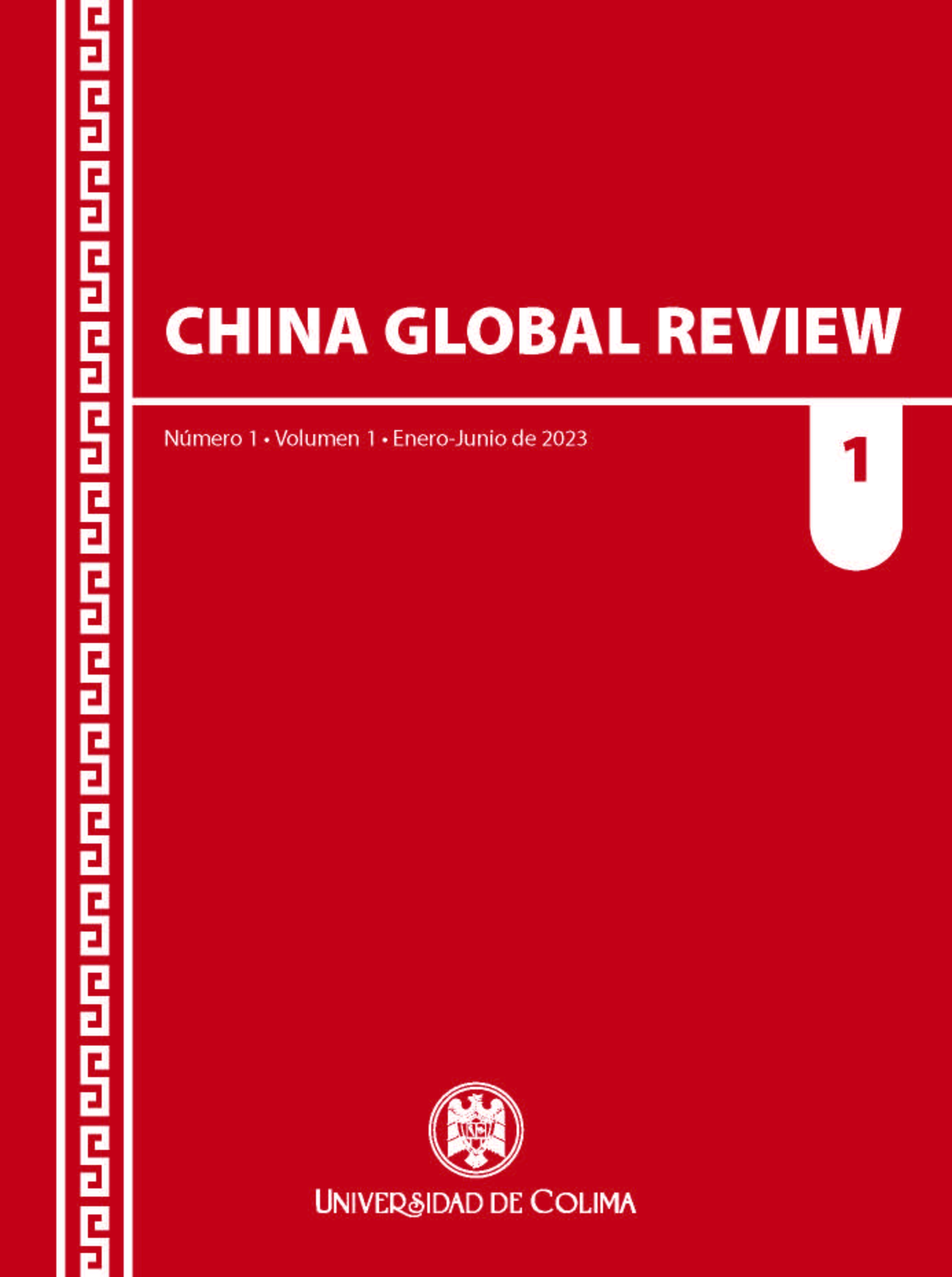The East-Asian stock markets during the COVID-19 pandemic
Palabras clave:
Stock Markets, East Asia, COVID-19, ARCH/GARCH ModelsResumen
We study the dynamics and volatilities of six East Asian stock market indices during the COVID-19 pandemic with five types of ARCH/GARCH models. The main results are: 1) Most of the volatilities of the series of returns show leverage effects; 2) the FIGARCH(1,1,1) model is the best one to describe the series of returns associated to the Shenzen and Shangai-Composite indices; 3) the GJR-GARCH(1,1,1) model is the best one to describe the series associated to the Hang-Seng, KOSPI and Nikkei-225 indices; and, 4) the APARCH(1,1,1,1) model is the best one to describe the series associated to the Taiwan-Weighted index. We develop the study with daily indices for the period between January 2nd, 2020 and December 16th, 2021.
Descargas
Citas
AlAli, M. S. (2020). The effect of WHO COVID-19 announcement on Asian Stock Markets returns: An event study analysis. Journal of Economics and Business, 3(3), 1051-1054. https://doi.org/10.31014/aior.1992.03.03.261
Baillie, R.T., Bollerslev, T., & Mikkelsen, H.O. (1996). Fractionally integrated generalized autoregressive conditional heteroskedasticity. Journal of Econometrics, 74(1), 3-30. https://doi.org/10.1016/S0304-4076(95)01749-6
Bollerslev, T. (1986). Generalized autoregressive conditional heteroskedasticity. Journal of Econometrics, 31(3), 307-327. https://doi.org/10.1016/0304-4076(86)90063-1
Bollerslev, T. (2010). Glossary to ARCH (GARCH). In T. Bollerslev, J.R. Russell & M. W. Watson (Eds.), Volatility and Time Series Econometrics: Essays in Honor of Robert F. Engle (pp. 137-163). Oxford University Press.
Bouhali, H., Dahbani, A. & Dinar, B. (2021). COVID-19 impacts on financial markets: Takeaways from the third wave. Russian Journal of Economics, 7(3), 200-212. https://doi.org/10.32609/j.ruje.7.65328
Brealey, R.A., Myers, S.C. & Allen, F. (2020). Principles of Corporate Finance (13th ed). McGraw-Hill.
Caporale, G.M. & Pittis, N. (2001). Persistence in macroeconomic time series: Is it a model invariant property?. Revista de Economía del Rosario, 4(2), 117-142. https://ssrn.com/abstract=928506
Chopra, M., & Mehta, C. (2022). Is the COVID-19 pandemic more contagious for the Asian stock markets? A comparison with the Asian financial, the US subprime and the Eurozone debt crisis. Journal of Asian Economics, 79, 101450. https://doi.org/10.1016/j.asieco.2022.101450
Ding, Z., Granger, C.W., & Engle, R.F. (1993). A long memory property of stock market returns and a new model. Journal of Empirical Finance, 1(1), 83-106. https://doi.org/10.1016/0927-5398(93)90006-D
Engle, R.F. (1982). Autoregressive conditional heteroscedasticity with estimates of the variance of United Kingdom inflation. Econometrica: Journal of the Econometric Society, 50(4), 987-1007. https://doi.org/10.2307/1912773
Franco, C. & Zakoian, JM. (2019). GARCH Models. Structural Models, Statistical Inference and Financial Applications (2nd ed). Wiley.
Gil-Alana, L. A., & Claudio-Quiroga, G. (2020). The COVID-19 impact on the Asian stock markets. Asian Economics Letters, 1(2), 17656. https://doi.org/10.46557/001c.17656
Glosten, L.R., Jagannathan, R., & Runkle, D.E. (1993). On the relation between the expected value and the volatility of the nominal excess return on stocks. The Journal of Finance, 48(5), 1779-1801. https://doi.org/10.1111/j.1540-6261.1993.tb05128.x
Gujarati, D.N., Porter, D.C. & Pal, M. (2021). Basic Econometrics (6th ed). McGraw-Hill.
He, Q., Liu, J., Wang, S., & Yu, J. (2020). The impact of COVID-19 on stock markets. Economic and Political Studies, 8(3), 275-288. https://doi.org/10.1080/20954816.2020.1757570
Jonung, L., & Roeger, W. (2006). The Macroeconomic Effects of a Pandemic in Europe. A Model-Based Assessment. (251 uppl.) (European Economy - Economic papers). European Commission. http://ec.europa.eu/economy_finance/publications/publication708_en.pdf
Kusumahadi, T. A., & Permana, F. C. (2021). Impact of COVID-19 on global stock market volatility. Journal of Economic Integration, 36(1), 20-45. https://www.jstor.org/stable/26985574
Li, X. (2021). Asymmetric impact of COVID-19 on China’s stock market volatility: Media effect or fact?. Asian Economics Letters, 2(4), 24143. https://doi.org/10.46557/001c.24143
Liu, H., Wang, Y., He, D., & Wang, C. (2020). Short term response of Chinese stock markets to the outbreak of COVID-19. Applied Economics, 52(53), 5859-5872. https://doi.org/10.1080/00036846.2020.1776837
McMullen, J. (2021, January 26). Covid-19: Five days that shaped the outbreak. BBC News. https://www.bbc.com/news/world-55756452
Mishra, P. K., & Mishra, S. K. (2021). COVID-19 pandemic and stock market reaction: Empirical insights from 15 Asian countries. Transnational Corporations Review, 13(2), 139-155. https://doi.org/10.1080/19186444.2021.1924536
Nelson, D.B. (1991). Conditional heteroskedasticity in asset returns: A new approach. Econometrica: Journal of the Econometric Society, 59(2), 347-370. https://doi.org/10.2307/2938260
Pearce, D. K. (1983). Stock prices and the economy. Federal Reserve Bank of Kansas City Economic Review, 68(9), 7-22. Available at https://www.kansascityfed.org/documents/871/1983-Stock%20Prices%20and%20the%20Economy.pdf
Rabhi, A. (2020). Stock market vulnerability to the COVID-19 pandemic: Evidence from emerging Asian stock market. Journal of Advanced Studies in Finance (JASF), 11(22), 121-136. https://doi.org/10.14505//jasf.v11.2(22).06
Rahman, M.A., Khudri, M.M., Kamran, M. & Butt, P. (2022). A note on the relationship between COVID-19 and stock market return: Evidence from South Asia, International Journal of Islamic and Middle Eastern Finance and Management, 15(2), 359-371. https://doi.org/10.1108/IMEFM-03-2021-0124
Rehman, M.U., Ahmad, N., Shahzad, S.J.H., & Vo, X.V. (2022). Dependence dynamics of stock markets during COVID-19. Emerging Markets Review, 51, 100894. https://doi.org/10.1016/j.ememar.2022.100894
Rodriguez, M.J. & Ruiz, E. (2012). Revisiting several popular GARCH models with leverage effect: Differences and similarities. Journal of Financial Econometrics, 10(4), 637-668. https://doi.org/10.1093/jjfinec/nbs003
Shaik, A. R. (2021). COVID-19 pandemic and the reaction of Asian stock markets: Empirical evidence from Saudi Arabia. The Journal of Asian Finance, Economics and Business, 8(12), 1-7. https://doi.org/10.13106/jafeb.2021.vol8.no12.0001
Shalal, A. (2022, January 20). IMF sees cost of COVID pandemic rising beyond $12.5 trillion estimate. Reuters. https://www.reuters.com/business/imf-sees-cost-covid-pandemic-rising-beyond-125-trillion-estimate-2022-01-20/
Szczygielski, J. J., Bwanya, P. R., Charteris, A., & Brzeszczyński, J. (2021). The only certainty is uncertainty: An analysis of the impact of COVID-19 uncertainty on regional stock markets. Finance Research Letters, 43, 101945. https://doi.org/10.1016/j.frl.2021.101945
Tayefi, M. & Ramanathan, T.V. (2012). An overview of FIGARCH and related time series models. Austrian Journal of Statistics, 41(3), 175-196. https://doi.org/10.17713/ajs.v41i3.172
Ullah, S. (2022). Impact of COVID-19 pandemic on financial markets: A global perspective. Journal of the Knowledge Economy, 1-22. https://doi.org/10.1007/s13132-022-00970-7
Yong, J. N. C., Ziaei, S. M., & Szulczyk, K. R. (2021). The impact of COVID-19 pandemic on stock market return volatility: Evidence from Malaysia and Singapore. Asian Economic and Financial Review, 11(3), 191-204. https://doi.org/10.18488/journal.aefr.2021.113.191.204
Yousaf, I., Bouri, E., Ali, S., & Azoury, N. (2021). Gold against Asian stock markets during the COVID-19 outbreak. Journal of Risk and Financial Management, 14(4), 186. https://doi.org/10.3390/jrfm14040186
Zakoian, J. M. (1994). Threshold heteroskedastic models. Journal of Economic Dynamics and Control, 18(5), 931-955. https://doi.org/10.1016/0165-1889(94)90039-6
Zehri, C. (2021). Stock market comovements: Evidence from the COVID-19 pandemic. The Journal of Economic Asymmetries, 24, e00228. https://doi.org/10.1016/j.jeca.2021.e00228
Zhang, Y., Zhou, L., Chen, Y., & Liu, F. (2022). The contagion effect of jump risk across Asian stock markets during the COVID-19 pandemic. The North American Journal of Economics and Finance, 61, 101688. https://doi.org/10.1016/j.najef.2022.101688
Descargas
Publicado
Cómo citar
Número
Sección
Licencia
Derechos de autor 2022 Universidad de Colima

Esta obra está bajo una licencia internacional Creative Commons Atribución-NoComercial 4.0.




